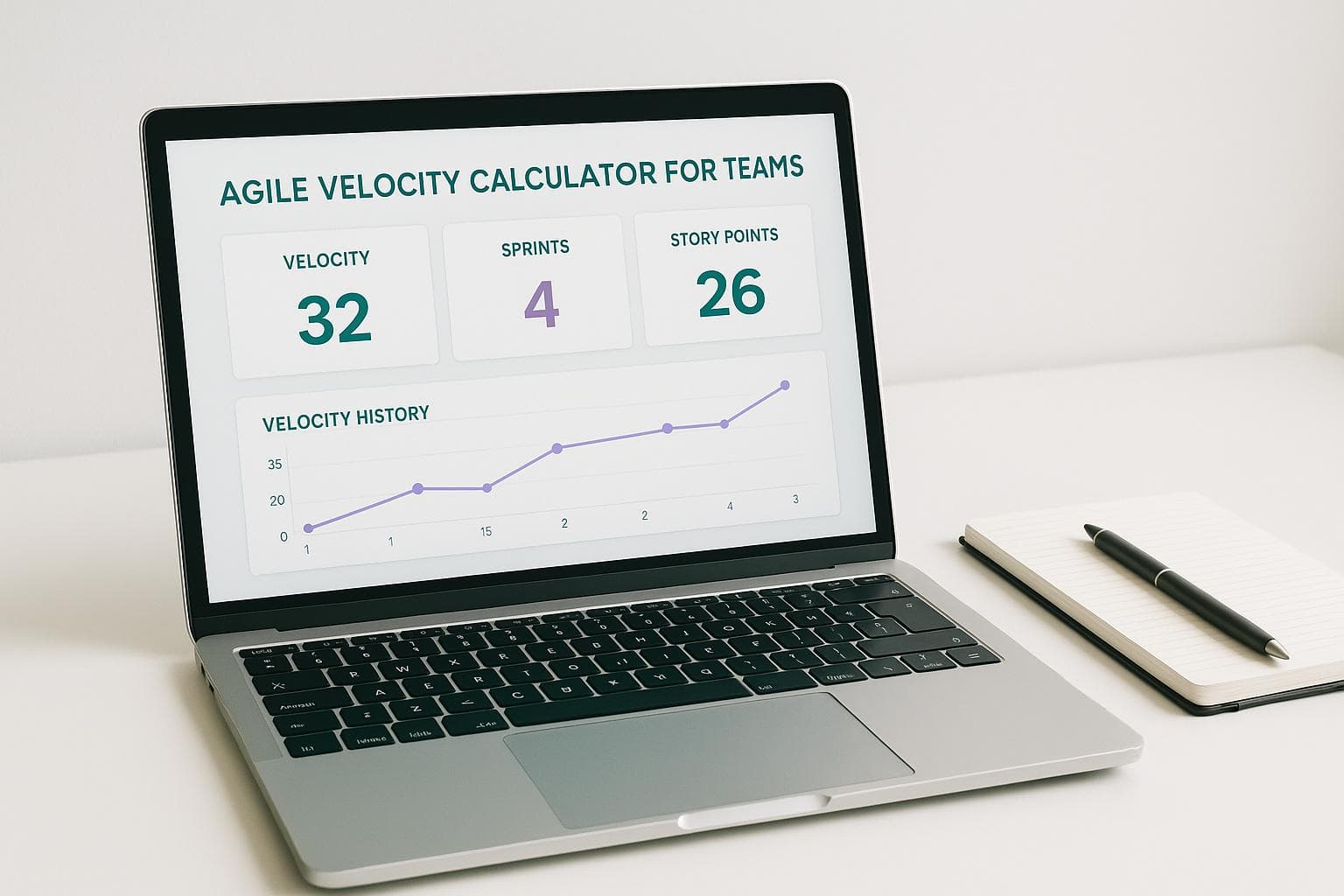Agile Velocity Calculator for Teams
Published Sep 15, 2025
⦁
2 min read

Agile Velocity Calculator for Teams
Understanding Team Performance with an Agile Velocity Calculator
If you’re part of an Agile team, you know how crucial it is to gauge your output over time. Tracking performance across sprints isn’t just about numbers—it’s about building a sustainable workflow. That’s where a tool to measure sprint capacity comes in handy. It takes the guesswork out of planning by showing you a clear average based on past data.
Why Track Sprint Metrics?
Every sprint tells a story. Maybe one cycle was packed with complex tasks, while another felt like a breeze. By looking at completed story points over multiple iterations, you start to see patterns. These insights help scrum masters and team leads set achievable goals without overloading anyone. Plus, having a reliable benchmark means you can communicate expectations to stakeholders with confidence.
Beyond the Numbers
A tool like this isn’t just for math—it’s for fostering collaboration. When everyone understands the team’s typical output, discussions around capacity get easier. You’re not pulling numbers out of thin air; you’ve got data to back it up. Whether you’re refining your backlog or preparing for a big release, knowing your team’s rhythm can make all the difference in delivering value consistently.
FAQs
What exactly is Agile velocity, and why does it matter?
Agile velocity is a measure of how much work—usually in story points—your team completes in a sprint. It’s not about speed; it’s about consistency. Knowing your average velocity helps you predict how much you can take on in future sprints, making planning more accurate. Think of it as a benchmark that evolves with your team’s rhythm.
How many sprints should I include for a reliable velocity?
Ideally, input data from at least 3 to 5 sprints to get a solid average. One or two sprints might not reflect your team’s true capacity since performance can vary due to holidays, onboarding, or tricky tasks. The more data you provide, the better the tool can smooth out those fluctuations and give you a dependable number.
What if my team’s story points aren’t consistent across sprints?
That’s totally normal, especially if your team is new to Agile or if projects differ in complexity. This calculator still works by averaging out the ups and downs to give you a baseline. Over time, as your team gets better at estimating, your velocity will stabilize. Use this tool regularly to spot trends and adjust.
Ready to improve your team's planning?
Put what you've learned into practice! Make your next planning session more engaging and accurate.
Try for free - no signup required